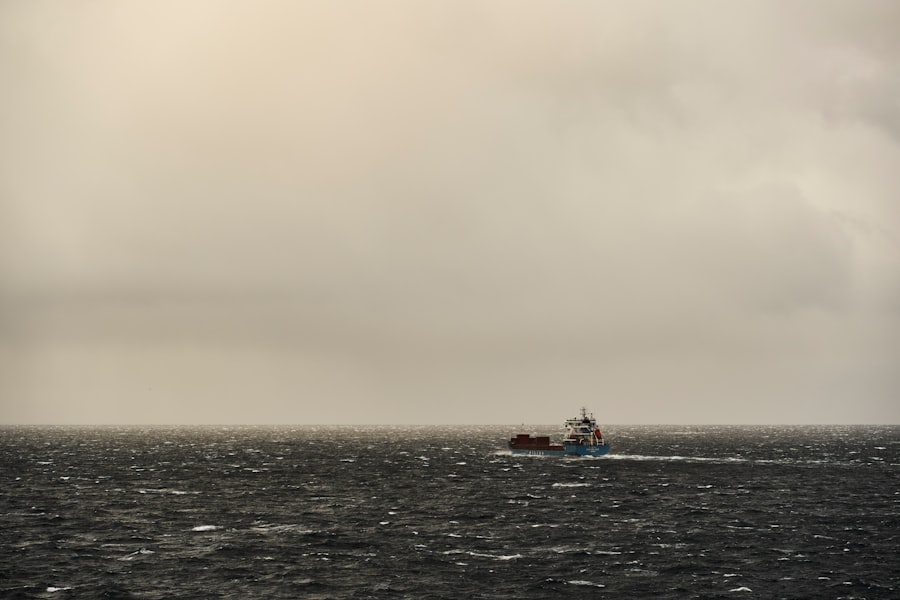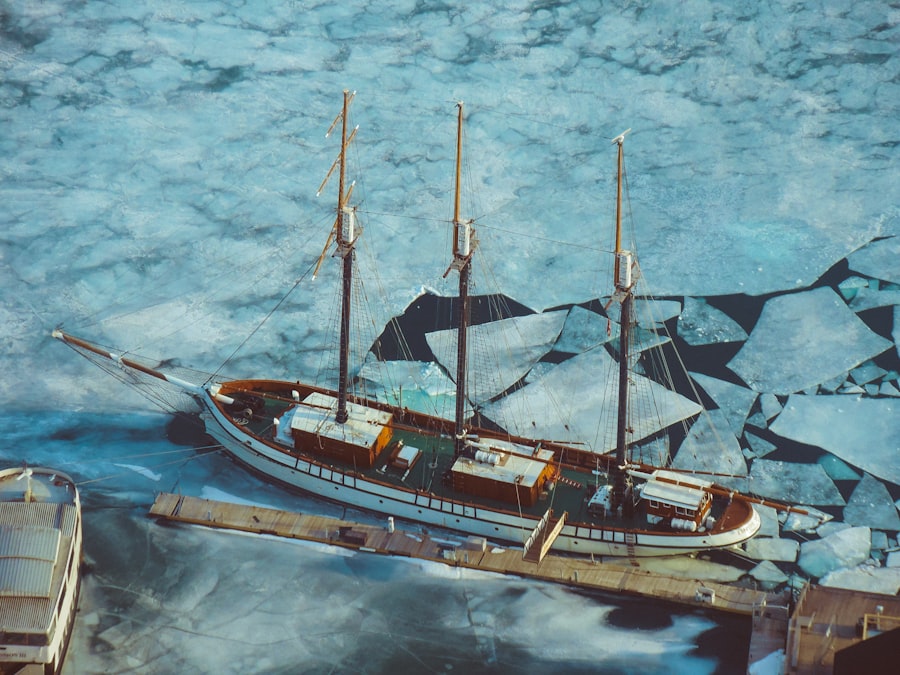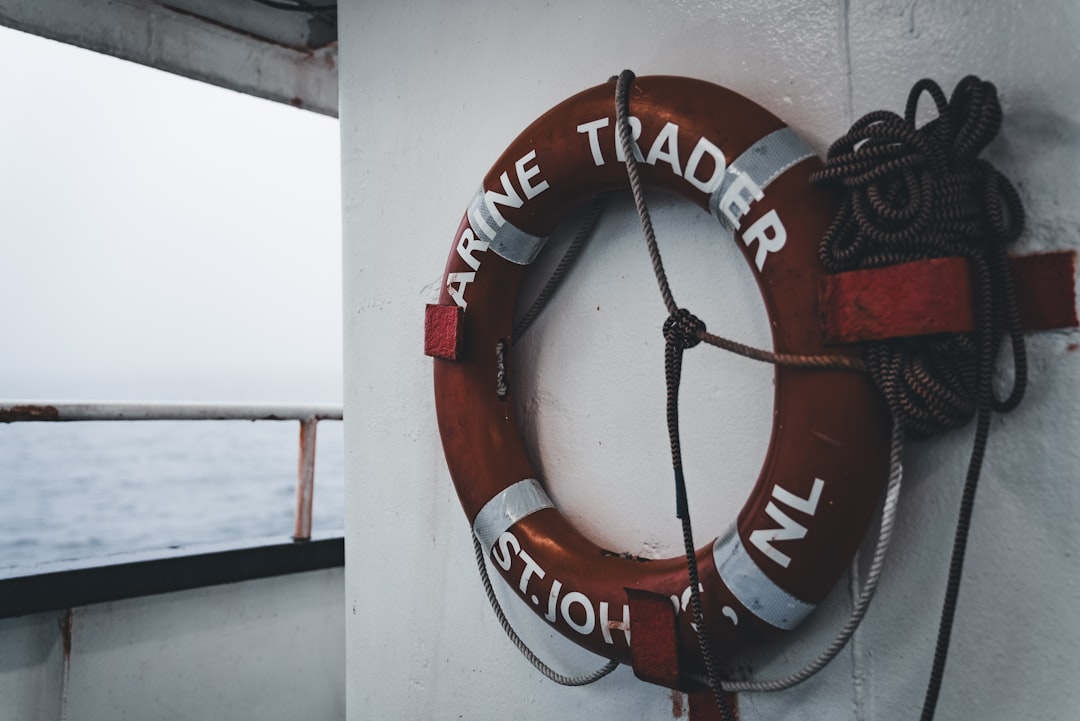The Drake Passage, a body of water situated between the southern tip of South America and Antarctica, is renowned for its tumultuous seas and unpredictable weather. Named after the English explorer Sir Francis Drake, who navigated these waters in the late 16th century, the passage serves as a critical maritime route for vessels traveling to and from the Antarctic region. Stretching approximately 800 kilometers (500 miles) wide, it connects the Atlantic and Pacific Oceans, making it a vital corridor for both commercial shipping and scientific research expeditions.
The Drake Passage is not only significant for its geographical location but also for its unique ecological and climatic characteristics. The passage is often described as one of the most treacherous waterways in the world, attracting adventurers and researchers alike. Its reputation stems from the combination of strong currents, high winds, and the convergence of different oceanic systems.
As such, it has become a focal point for those interested in maritime history, oceanography, and wildlife observation. The Drake Passage embodies both the allure and peril of ocean exploration, drawing individuals who seek to experience its raw beauty while also confronting its formidable challenges.
Key Takeaways
- The Drake Passage is a body of water between South America’s Cape Horn and the South Shetland Islands of Antarctica, known for its treacherous conditions and strong currents.
- The Drake Passage is characterized by its geographic features, including the Antarctic Circumpolar Current and the lack of any landmass to slow down wind and water, making it a dangerous crossing for ships.
- The weather patterns in the Drake Passage are unpredictable and can change rapidly, leading to strong storms and rough seas that pose significant risks to navigation.
- The Drake Passage has a history of shipwrecks and disasters, including the sinking of the Endurance during Ernest Shackleton’s Antarctic expedition, highlighting the dangers of the region.
- The wildlife and environmental hazards in the Drake Passage include icebergs, large waves, and the presence of marine mammals and seabirds, which can pose threats to navigation and safety.
- Navigating the Drake Passage presents challenges such as extreme weather, strong currents, and the need for constant vigilance to avoid hazards and ensure safe passage.
- Safety measures and precautions for crossing the Drake Passage include thorough voyage planning, experienced crew, and appropriate safety equipment to mitigate the risks associated with the journey.
- Modern technology and advancements in navigating the Drake Passage, such as satellite communication and advanced weather forecasting, have improved safety and navigation in the region.
- Climate change is impacting the Drake Passage, leading to shifts in weather patterns, ice melt, and changes in wildlife populations, which can affect navigation and safety in the region.
- Famous expeditions and explorations through the Drake Passage, including those of James Cook and Charles Darwin, have contributed to our understanding of the region and its challenges.
- Tips for travelers and adventurers crossing the Drake Passage include being prepared for rough seas, extreme weather, and the potential for seasickness, as well as choosing experienced and reputable tour operators for the journey.
Geographic features that make the Drake Passage dangerous
The geographic features of the Drake Passage contribute significantly to its reputation as a perilous maritime route. One of the most notable characteristics is the presence of the Antarctic Circumpolar Current, which flows unimpeded around Antarctica and converges in the Drake Passage. This current is responsible for creating powerful waves and turbulent waters that can reach heights of over 30 feet during storms.
The interaction between this current and the varying depths of the ocean floor creates unpredictable swells that can catch even experienced sailors off guard. Additionally, the narrowness of the passage amplifies these dangers. As vessels navigate through this constricted area, they are often subjected to sudden changes in wind direction and intensity.
These geographic features combine to create a challenging environment that demands respect and caution from those who dare to traverse its waters.
Weather patterns and storms in the Drake Passage

The weather patterns in the Drake Passage are notoriously volatile, characterized by rapid changes that can occur within a matter of hours. The region is influenced by a variety of climatic systems, including polar fronts and mid-latitude cyclones, which can lead to severe storms with little warning. These storms are often accompanied by fierce winds that can exceed 60 knots, creating chaotic sea conditions that pose significant risks to vessels.
The passage is also known for its fog and low visibility, which can further complicate navigation.
This unpredictability has earned the Drake Passage a reputation as a sailor’s nightmare, where even seasoned captains must remain vigilant and adaptable to changing conditions.
Historical shipwrecks and disasters in the Drake Passage
| Ship Name | Date of Disaster | Type of Disaster |
|---|---|---|
| SS Isla de Los Estados | 1929 | Shipwreck |
| SS Admiral Nakhimov | 1986 | Collision |
| MS Explorer | 2007 | Shipwreck |
The treacherous nature of the Drake Passage has led to numerous shipwrecks and maritime disasters throughout history. One of the most infamous incidents occurred in 1914 when Ernest Shackleton’s ship, the Endurance, became trapped in pack ice while attempting to reach Antarctica. Although not a direct wreck in the passage itself, this event highlighted the dangers associated with navigating these waters during harsh conditions.
The crew’s harrowing journey to safety became legendary, showcasing both human resilience and the perils of polar exploration. Another notable disaster took place in 1989 when the cruise ship MV Explorer sank after hitting an iceberg in the passage. This incident served as a stark reminder of the risks associated with traversing these icy waters.
The shipwreck resulted in a dramatic rescue operation, with all passengers ultimately saved, but it underscored the need for heightened awareness and preparedness when navigating this perilous region.
Wildlife and environmental hazards in the Drake Passage
The Drake Passage is not only known for its dangerous waters but also for its rich biodiversity. It serves as a critical habitat for various marine species, including whales, seals, and seabirds. However, these wildlife populations face significant threats from environmental hazards such as pollution and climate change.
The increasing presence of microplastics and other pollutants poses risks to marine life, disrupting ecosystems that have thrived for centuries. Moreover, the passage is home to unique species that are particularly vulnerable to changes in their environment. For instance, krill, a key food source for many marine animals, is affected by rising ocean temperatures and changing salinity levels.
As these environmental hazards continue to escalate, they threaten not only the wildlife that inhabits the Drake Passage but also the delicate balance of its ecosystem.
Navigation challenges in the Drake Passage

Navigating through the Drake Passage presents numerous challenges for mariners due to its unpredictable conditions and complex geography. The combination of strong currents, shifting winds, and rapidly changing weather can create a daunting environment for even the most experienced navigators. Additionally, the presence of icebergs and floating debris adds another layer of difficulty to navigation efforts.
Mariners must also contend with limited visibility caused by fog or heavy precipitation, which can obscure landmarks and navigational aids. The lack of reliable charts for certain areas further complicates navigation, requiring sailors to rely on their instincts and experience. As a result, crossing the Drake Passage demands not only technical skill but also an acute awareness of environmental conditions.
Safety measures and precautions for crossing the Drake Passage
Given the inherent dangers associated with crossing the Drake Passage, safety measures are paramount for any vessel undertaking this journey. Mariners are advised to conduct thorough pre-voyage preparations, including detailed weather assessments and route planning. Utilizing advanced forecasting tools can help sailors anticipate potential storms or adverse conditions that may arise during their crossing.
Onboard safety protocols are equally important. Vessels should be equipped with life rafts, emergency beacons, and other essential safety equipment to ensure preparedness in case of an emergency. Crew training in emergency response procedures is crucial for maintaining safety during turbulent conditions.
By prioritizing safety measures and adhering to best practices, mariners can mitigate risks while navigating this challenging waterway.
Modern technology and advancements in navigating the Drake Passage
Advancements in technology have significantly improved navigation through the Drake Passage in recent years. Modern vessels are equipped with sophisticated navigation systems that utilize GPS technology, radar, and sonar to enhance situational awareness. These tools allow mariners to monitor real-time weather conditions and oceanographic data, enabling them to make informed decisions while at sea.
Additionally, satellite communication has revolutionized how sailors stay connected during their journeys. Access to up-to-date weather forecasts and navigational information can be crucial for avoiding dangerous conditions in the passage. As technology continues to evolve, it holds great promise for enhancing safety and efficiency in navigating one of the world’s most challenging maritime routes.
The impact of climate change on the Drake Passage
Climate change poses significant challenges for the Drake Passage and its surrounding environment. Rising global temperatures have led to increased melting of polar ice caps, resulting in changes to ocean currents and sea levels. These alterations can exacerbate existing hazards within the passage, such as stronger storms and shifting marine ecosystems.
Furthermore, changes in water temperature can affect species distribution within the passage. As certain marine species migrate in response to warming waters, it may disrupt established food chains and impact local fishing industries. The long-term effects of climate change on the Drake Passage remain uncertain but underscore the need for ongoing research and conservation efforts to protect this vital marine ecosystem.
Famous expeditions and explorations through the Drake Passage
Throughout history, numerous expeditions have traversed the Drake Passage, each contributing to our understanding of this remote region. One of the most notable was Sir Ernest Shackleton’s Imperial Trans-Antarctic Expedition in 1914-1917. Shackleton’s journey through these treacherous waters became legendary due to his crew’s remarkable survival story after their ship became trapped in ice.
Another significant expedition was led by Norwegian explorer Roald Amundsen, who became the first person to reach both poles. His successful navigation through the Drake Passage was instrumental in his journey to Antarctica in 1911. These expeditions not only advanced human knowledge of polar regions but also highlighted the indomitable spirit of exploration amidst formidable challenges.
Tips for travelers and adventurers crossing the Drake Passage
For travelers seeking adventure across the Drake Passage, preparation is key to ensuring a safe and enjoyable experience. First and foremost, individuals should choose reputable tour operators with experience navigating these waters. Researching past trips and reading reviews can provide valuable insights into what to expect during the journey.
Packing appropriately is also essential; travelers should bring layers of clothing suitable for varying weather conditions, as temperatures can fluctuate dramatically within a single day. Additionally, investing in high-quality seasickness medication or remedies can help mitigate discomfort during rough crossings. Lastly, maintaining an open mind and a spirit of adventure will enhance any journey through this remarkable passage.
Embracing both the challenges and beauty of this unique environment will create lasting memories for those fortunate enough to traverse its waters.
The Drake Passage is notorious for its treacherous conditions, making it one of the most dangerous sea routes in the world. This narrow body of water between the southern tip of South America and Antarctica is where the Atlantic, Pacific, and Southern Oceans converge, creating a perfect storm of strong currents, high winds, and massive waves. These factors contribute to the unpredictable and often violent weather patterns that challenge even the most experienced sailors. For more insights into the geographical and environmental factors that contribute to the perilous nature of the Drake Passage, you can explore a related article on MyGeoQuest.
WATCH HERE: Drake Passage: Earth’s Deadliest Waters Revealed
FAQs
What is the Drake Passage?
The Drake Passage is the body of water between the southern tip of South America and the northern tip of the Antarctic Peninsula. It connects the Atlantic and Pacific Oceans.
Why is the Drake Passage so dangerous?
The Drake Passage is known for its rough seas and strong winds, making it one of the most treacherous stretches of water in the world. The convergence of the Atlantic, Pacific, and Southern Oceans creates intense weather patterns, including powerful storms and high waves.
Are there any other factors that contribute to the danger of the Drake Passage?
In addition to the challenging weather conditions, the Drake Passage is also characterized by unpredictable currents and icebergs, further adding to the hazards of navigating through the area.
How do these conditions affect maritime travel through the Drake Passage?
The combination of rough seas, strong winds, currents, and icebergs makes the Drake Passage a challenging route for maritime travel. Ships and vessels crossing the passage must be well-equipped to handle the harsh conditions and often experience significant motion and discomfort.
Are there any safety measures in place for navigating the Drake Passage?
Maritime authorities and experienced captains take various safety measures when navigating the Drake Passage, including careful route planning, monitoring weather forecasts, and ensuring that vessels are equipped with appropriate safety equipment and technology to handle the challenging conditions.
